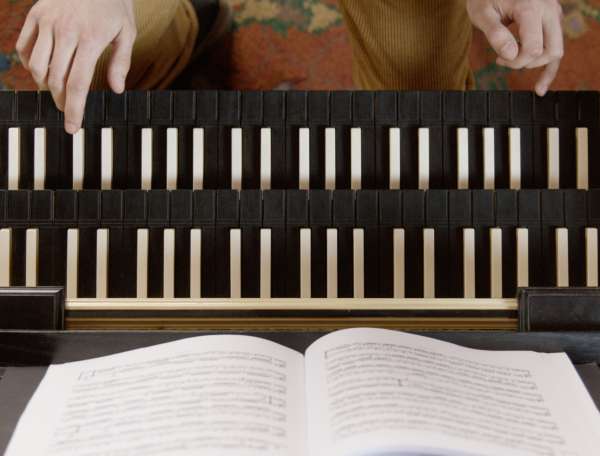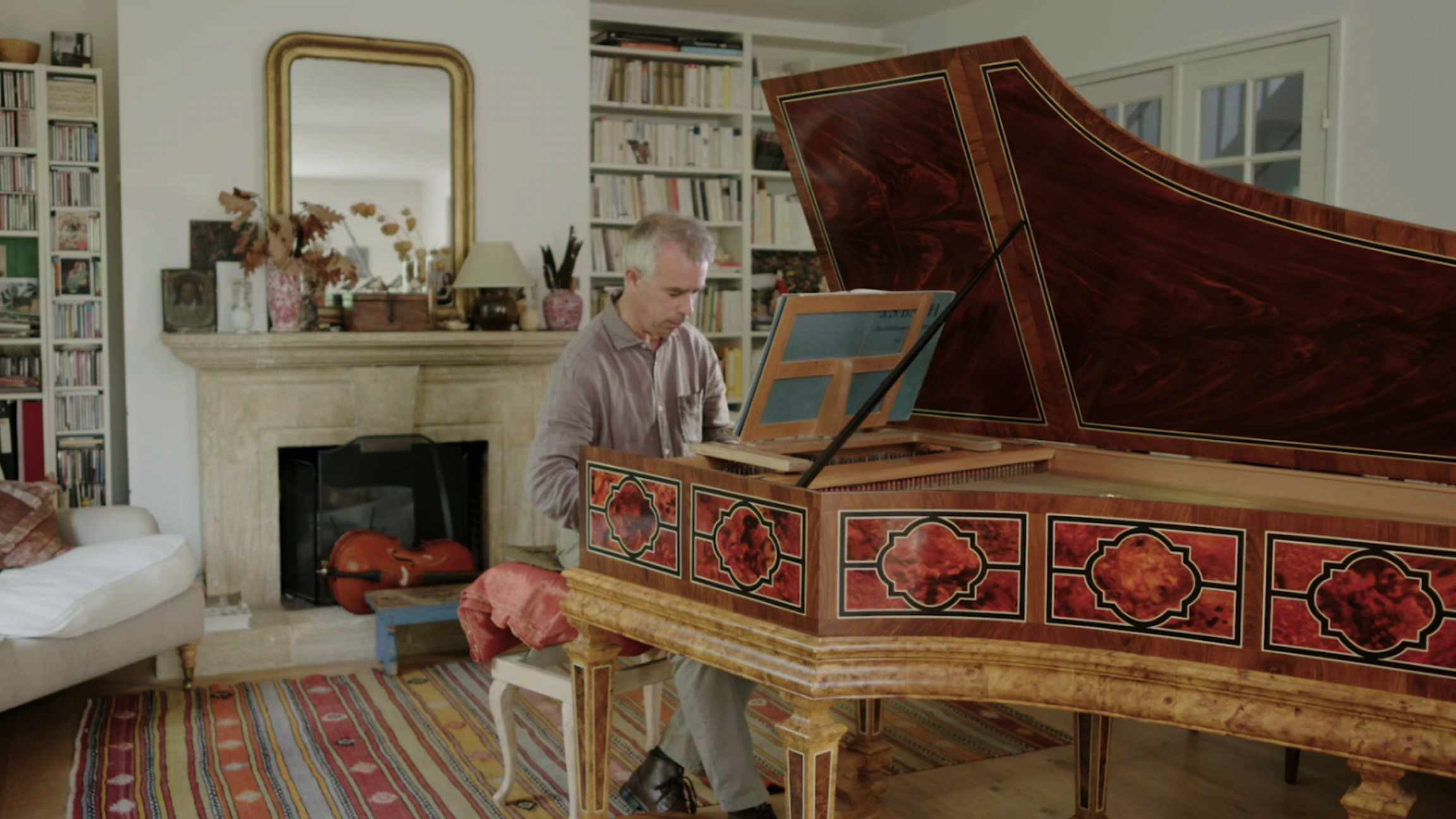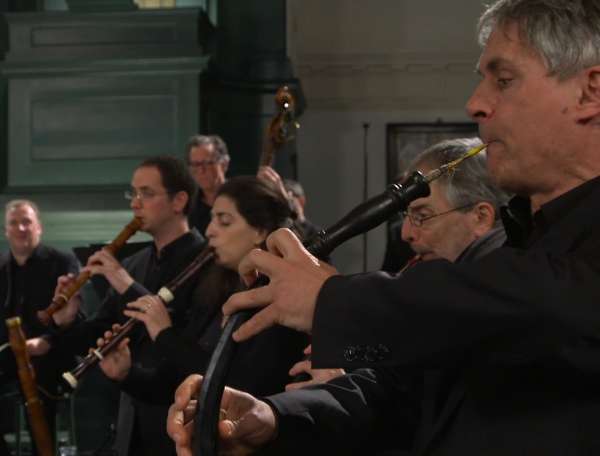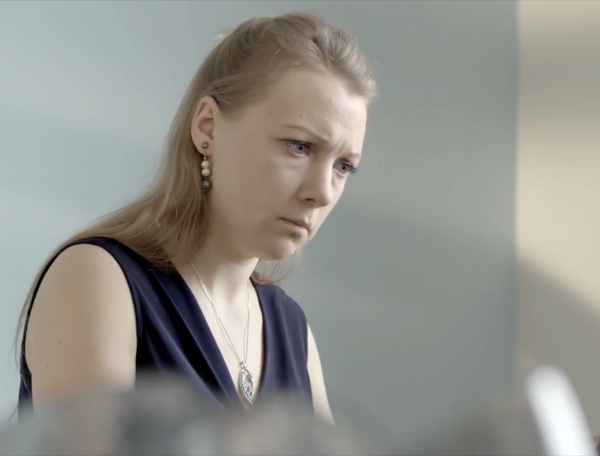

The Well-Tempered Clavier I No. 19 in A major
BWV 864 performed by Pierre Hantaï
at home in Chevreuse, France
Behind the music
Fugue and fugue in A
In this surprising duo, Bach - who is often so strict - shows a different side of himself
Prelude and fugue are a practically inseparable couple, especially in Bach’s case. But here, deep in the first book of the Wohltemperirte Clavier, a different duo crops up. This prelude is actually a fugue as well, and a three-part one to boot. The ‘real’ fugue sticks to the rules, but remains a true puzzle nonetheless. The clear fugue-as-prelude, on the other hand, cheats a bit by introducing the theme and counter-theme at the same time. Through this combination, Bach emphasises the ambiguous character of the key of A major. The counter-theme in the bass with its descending chromatic line may be interpreted as sombre, while the theme in the right hand has a more cheerful feel to it, with elegant ornamentation (which soon becomes an independent motif) and a tense pause, followed by the release of a long string of notes. The helter-skelter of the runs gradually takes over the prelude, making a detour to minor and back again, to end as it began.
But then comes a note like an exclamation, and silence! To confuse us even further, Bach follows the fugue theme with a series of unmelodious leaps, so that our ears can hardly distinguish the key. As we said, everything about this atypical fugue is correct – it is even an extremely pure one as regards musical material – but the curious theme, no more than leap and rhythm, continually puts the listener on the wrong track. Within a single bar of nine beats, Bach writes the musical equivalent of an optical illusion. Just as you have become accustomed to a regular movement in four, a strong exclamation of the theme abruptly calls you to attention. The fugue also goes over the lines, for example when the themes interrupt one another early on (this tension-raising stretto technique usually comes only at the end of a fugue). It also does so at the beginning, when Bach coolly suggests a fourth part through introducing an extra theme.
Das Wohltemperirte Clavier, BWV 846-893
Composing 48 keyboard pieces in all 24 keys was the sort of challenge Bach enjoyed. In each of the two parts of the Wohltemperirte Clavier, he brought together the musical couple prelude and fugue 24 times; twelve in minor keys and twelve in major. In the preludes, he gave free rein to his imagination, and demonstrated mathematical tours de force in the fugues. In contrast to the iron discipline Bach had to apply to his church compositions, here he could abandon himself to intellectual Spielerei without worrying about deadlines.
The first part of the Wohltemperirte Clavier dates from 1722, although it contains some music that was written in the preceding five years. There is less clarity about the history of part two. Bach compiled this second manuscript only around 1740, although once again some of the preludes and fugues it contains date from a much earlier period. Bach described the target group for this collection of pieces as follows: ‘Zum Nutzen und Gebrauch der Lehr-begierigen Musicalischen Jugend, als auch dere in diesem studio schon habil seyenden besonderem ZeitVertreib’ (For both the education of the industrious musical youngster and the enjoyment of those well-versed in this material’).
- BWV
- 864
- Title
- Prelude and fugue in A major
- Epithet
- no. 19 from The Well-Tempered Clavier I
- Instrument
- harpsichord
- Genre
- harpsichord works
- Serie
- Das Wohltemperirte Clavier I
- Year
- 1722 or earlier
- City
- Köthen (or Weimar?)
With support from
Prins Bernhard Cultuurfonds
Extra videos
Vocal texts
Original
Translation
Credits
-
- Release date
- 3 February 2017
-
- Recording date
- 16 September 2016
-
- Location
- Chevreuse, France
-
- Harpsichordist
- Pierre Hantaï
-
- Harpsichord
- William Dowd (1984) en Bruce Kennedy (1994) Frankrijk, naar Michael Mietke
-
- Director
- Jan Van den Bossche, Hanna Schreuders
-
- Music recording, edit and mix
- Guido Tichelman
-
- Camera and interview
- Gijs Besseling
-
- Producer
- Hanna Schreuders
-
- With support from
- Prins Bernhard Cultuurfonds
Discover
Help us to complete All of Bach
There are still many recordings to be made before the whole of Bach’s oeuvre is online. And we can’t complete the task without the financial support of our patrons. Please help us to complete the musical heritage of Bach, by supporting us with a donation!

